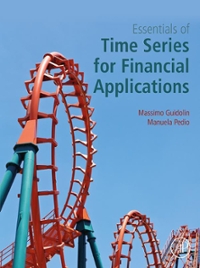am stuck please I need help thankyou
(1) Given the following system of linear equations, which depends on a parameter a E R. x + 2y - 3: 3r - y + 52 Arty + (al - 14)= = 0+2 (a) Classify the system of equations depending on the values of the parameter a. (b) Solve the system for the values of the parameter a for which there are infinitely many solutions. (2) Consider the set A = {(r,y) ( R' : y Sx+ 1,y 0) and the function f(x, y) =y - x]. (a) Draw the set A, its boundary and its interior. Determine, justifying the answers, if the set A is closed, open, bounded, compact and/or convex. (b) Do the hypotheses of Weierstrass' Theorem hold? Why? (c) Draw the level curves of f. Indicate the direction of growth. Using its level curves, determine if the function f attains a global maximum (and/or a minimum) value in the set A. Find points at which it is attained. (3) Consider a firm that needs to produce 42 units of a certain product at the minimum possible cost. If the firm uses K units of capital and L units of labour, its production is vA + VL units. The prices per unit of capital and labour are, respectively, 1 and 20 monetary units. (a) Write the optimization problem of the firm. Write the associated Lagrangian funtion and the Lagrange equations. (b) Solve the Lagrange equations. Check the second order conditions for the critical points and find the solution of the problem. Suppose now that the firms needs to produce 41 units. Using the computations you have already done and without solving the problem again, determine approximately how many monetary units would the company save in this case. (4) Given the following system of equations sty+= = 2 (a) Apply the Implicit Function Theorem (checking that the hypotheses are satisfied) to show that, in the above system of equations, it is possible to obtain the variables y and = as functions of r in a neighborhood of the point (To. yo. 20) = (1, -1,2), so that a and the functions y(x) and z(r) are solutions of the above system of equations that satisfy y(1) = -1, =(1) = 2 (b) Compute Taylor's first order approximation of the functions y(r), z(x) around the point ro = 1. (5) Consider the function f(r,y) = ryer+2y. (a) Determine the critical points (if any) of the function f in the set R?. (b) Classify the critical points of f into (local or global) maxima, minima and saddle points (6) Consider the function f(x,y) = 2ar' - by? + 4r -3. Discuss, depending on the values of the parameters a and b. when the function f is strictly convex and/or concave.(1) Consider the following system of linear equations x - by - 2z = = b r+ (2 - b)y where a, be R. (a) Classify the system according to the values of a and b. (b) Solve the above system for the values of a and b for which the system has infinitely many solutions. (2) Consider the function f(z,y) = si (x, y) # (0.0). si (r, y) = (0, 0). (a) Determine whether the function f is continuous at the point (0,0). (b) Compute (if they exist) the partial derivatives of f at the point (0, 0). Compute (if it exists) the derivative of f at the point (0, 0) according to the vector v = (1, 4). /Is the function f differentiable at the point (0, 0)? (3) Consider the function f(x, y) = ar + (a + bly + 2ary + 2, with a, be R (a) Study the concavity and the convexity of the function f according to the values of a and b. (b) For the values a = 1, 6=0, does the function f attain a maximum and/or minimum value in R27 At what points? (Justify the answer). (4) Consider the function f(z.y) = ry' and the set A = {(r, y) ( R' : x + y 0,y 2 0} and the function f(x, y) = x +. (a) Draw the set A, its boundary and its interior. Determine, justifying your answers, whether the set A is closed, open, bounded, compact and/or convex. (b) Are the hypotheses of Weierstrass' Theorem satisfied for the set A and the function f? Draw the level curves of f indicating the direction of growth. Use the level curves to determine (if they exist) the global maximum and/or minimum of f on A and the points at which they are attained. (3) Answer the following questions. (a) Given the function /(r,y) = ylazy-3, compute the plane tangent to the graph of f corresponding to the point (z,y) = (1/2,2). Compute the derivative of f at the point (1/2, 2) according to the vector v = (-1,3) (b) Given the function f above, compute the Taylor polynomial of f of order two around the point (1/2, 2). (4) Consider the function f(x, y) = 8ar - 24ry + y', where a # 0. (a) Find the critical points of the function f above. (b) Classify the critical points found above, according to the values of a. (5) Consider the function f(x,y) = x -y and the set A = {(r. y) ( R3 : x] + y' = 1}. (a) Find the Lagrange equations that determine the extreme points of f in A and calculate the solutions of these equations. (b) Characterize the above solutions into local maxima and minima, using the second order conditions. Can you tell if they are global maxima and/or minima? (Explain your answer)









